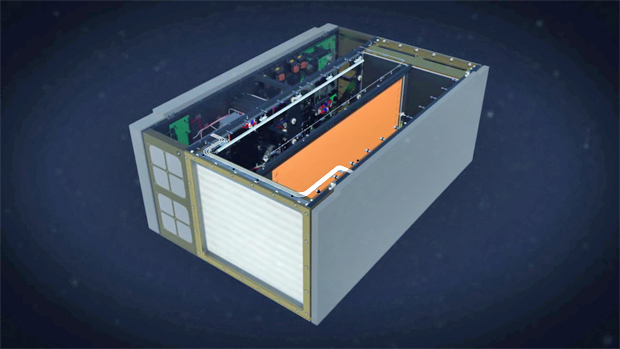Cargo ship departs space station, sets stage for fire experiment
An Orbital ATK Cygnus cargo ship was released from the International Space Station early Tuesday, clearing the way for an on-board experiment to set off a relatively large fire inside the spacecraft to learn more about how flames propagate in weightlessness.
Loaded with 4,087 pounds of trash and no-longer-needed gear -- including the automated Spacecraft Fire Experiment, or Saffire-1 -- the solar-powered cargo ship, named after shuttle Columbia commander Rick Husband, was unberthed from the station's Unity module and released by the lab's robot arm at 9:30 a.m. EDT (GMT-4).
Station commander Timothy Kopra congratulated the Orbital ATK team for a "very successful mission of the S.S. Rick Husband."
"We're very grateful we've had the supplies and the science to sustain our mission here on the International Space Station," he said.
The Cygnus will re-enter the atmosphere and burn up on June 22, its final moments recorded by sensors designed to document how the spacecraft breaks apart.
But first, engineers with NASA's Glenn Research Center planned to carry out the Saffire-1 experiment, sending up commands from the Orbital ATK mission control room in Dulles, Va., to ignite a composite fiberglass-cotton fabric housed inside an experiment enclosure.
"NASA's objective is to reduce the risk of long-duration exploration missions, and a spacecraft fire is one of the biggest concerns for NASA and the international space exploration community," said Jason Crusan, NASA director of advanced exploration systems.
The goal of the research is "to answer the questions of how large does a fire get and how rapidly does it spread, or how long does it take it to get to the point where it would be really hazardous to the crew?" NASA co-investigator Gary Ruff said before launch.
"The other goal is to look at material flammability limits, and that is going to answer the question will a material burn better or extinguish in microgravity compared to how it behaves when we perform a similar test on the ground?"
Multiple experiments have been carried out over the years to learn how small flames behave in weightlessness but up to this point, the largest samples set ablaze measured 4-inches square or less. The composite fabric in the Saffire-1 experiment measures 3.2 feet long by 16 inches wide.
Once ignited, cameras in the experiment enclosure will record the fire and sensors will measure temperature and other factors. The video and data will be downlinked later with the first images expected Wednesday.
"One of the big questions in fire safety is how rapidly do conditions in a room or spacecraft get bad for inhabitants?" Ruff said. "Based on that answer, what we can do is make sure we provide the right types of fire detection, fire suppression, clean up equipment and fire protection for the crew while they are responding to a fire."
The Cygnus spacecraft was launched to the station March 22, loaded with more than 7,500 pounds of station equipment, crew supplies and research gear. It was unloaded by the station crew and repacked with trash and other no-longer-needed items.
Along with Saffire-1, the departing cargo ship also carried five small "cubesat" satellites that will be released Wednesday and a re-entry breakup recorder that will collect temperature and acoustic data as the spacecraft succumbs to the heat of re-entry. The data will be radioed back to researchers through the Iridium satellite telephone network.
"Cygnus undergoes a destructive re-entry, that means it burns up in the atmosphere," said Holly Vavrin, the lead NASA engineer overseeing the Cygnus mission. "So that's a really effective way of getting rid of trash and broken or obsolete hardware that we no longer need on station."
The cargo also includes "dirty laundry, food canisters and, of course, smelly waste items," Vavrin said. "So we're basically a big garbage truck! But it's a very important aspect to support station operations."

